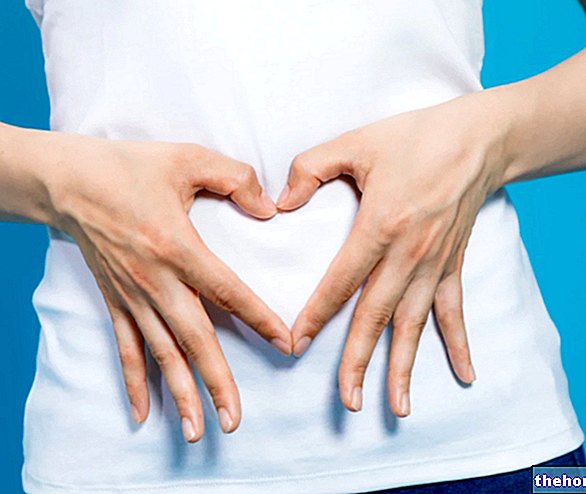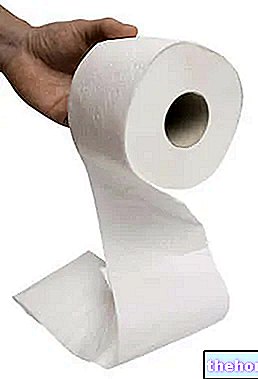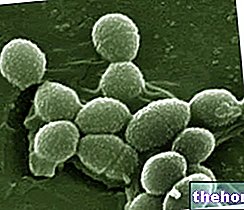Generality
Diarrhea is a defecation disorder characterized by the rapid emission of abundant and poorly formed stools.
In order to be able to speak of diarrhea, both of these conditions must be present at the same time:
- at least three bowel movements per day;
- alterations in the quantity or quality of manure (presence of poorly formed stools: liquid or semi-liquid)

Insights
Diarrhea, considered by many to be a trivial disease mostly linked to certain food choices, stress or seasonal ailments, is actually a sneaky enemy that causes over three million deaths every year in the world. In these cases, diarrhea is caused by various infectious diseases that can spread due to poor personal hygiene or through contaminated water and food. However, these are limited events, frequent in defied patients living in developing countries, but extremely rare in industrialized ones. In Italy, for example, mortality from diarrhea is less than 0.4 per thousand.
Despite this danger, diarrhea must still be interpreted as a sort of defensive response of the organism. In fact, diarrheal discharges favor the elimination of pathogenic microorganisms, toxins or irritants. For this reason it is good to avoid using antidiarrheal drugs, without first having discovered the true cause of diarrhea.
Stool formation and diarrhea
Between ingested liquids, foods and secretions (saliva, gastric juice, bile, pancreatic secretion and enteric juice) about 10 liters of material pass through the digestive tract every day. Of these, about 90% is absorbed in the ileum (terminal tract of the small intestine); the remaining 10% is instead absorbed in the colon, which has the ability to reabsorb up to 4-5 liters of liquids. Under normal conditions the aqueous content of the faeces is about 100 ml / day; if it exceeds 200ml / day and is accompanied by frequent discharges (> 3 days) we can speak of diarrhea.
The secretions poured down the digestive tract, in addition to containing a good percentage of water, are rich in proteins and mineral salts and in particular in sodium, chlorine, bicarbonate and potassium. These electrolytes are largely reabsorbed along the large intestine where the digestion process is completed. Thanks to the activity of this terminal tract of the digestive tract, the semiliquid content is gradually depleted of water and minerals until it assumes consistency and equilibrium. typical hydro-salt of feces.
A simple, even modest, alteration of these resorption mechanisms can cause diarrhea.
However, not all forms of diarrhea are linked to a reduction in colonic or ileal absorption capacity: the presence of liquid stools can also be due to bacterial or viral infections, food intolerances or alterations in gastric motility.
Types of diarrhea
Based on the frequency of symptoms, diarrhea is classified into:
- recurrent diarrhea (with a cyclical course and close diarrheal episodes)
- acute diarrhea (lasting less than three weeks)
- chronic diarrhea (lasting more than three to four weeks)
Going into the specifics, we discover at least four different mechanisms capable of causing diarrhea:
- DIARREA FROM ALTERED ABSORPTION: caused by a deficit of the active pumps, special mechanisms that provide for the intestinal reabsorption of electrolytes (mineral salts). Even a reduction of the intestinal surface can decrease the absorption capacity of water, electrolytes and nutrients causing diarrhea (resections or surgical bypasses; diseases that alter the villi and intestinal mucosa: celiac disease, diverticulitis, etc.).
- OSMOTIC DIARREA: caused by the intake of non-absorbable and osmotically active substances (they recall water). In these cases, diarrhea can be caused by osmotic laxatives (magnesium salts, etc., dietary foods (presence of sugar alcohols or large quantities of fructose) malabsorption, food intolerances (lactose, gluten, soy proteins, etc.)
- SECRETORY OR INFLAMMATORY DIARREA: caused by intestinal hypersecretion of water and electrolytes. Many infections or food poisoning are responsible for this type of diarrhea which can also be caused by hormone-secreting intestinal tumors or some types of laxatives. Due to this inflammation (inflammation), stools contain large amounts of water and are often enriched with proteins, pus and blood (dysentery).
- MOTOR DIARREA: caused by an "alteration of the motility and speed of intestinal transit (hyperperistalticism). The increase in peristalsis reduces digestion and absorption of water and various nutrients, causing diarrhea. This type of diarrhea is common in patients suffering from irritable bowel or carcinoid with overproduction of 5-hydroxy-tryptamine.
Other articles on "Diarrhea"
- Diarrhea: causes and treatment
- Dysentery
- Traveler's Diarrhea
- Chronic diarrhea
- Chronic Diarrhea: Types, Symptoms and Complications
- Chronic diarrhea: Diagnosis, Treatment, Diet
- Diet and diarrhea
- Nutrition and diarrhea
- Diarrhea and Antibiotics
- Probotics and Diarrhea
- Drugs That Cause Diarrhea
- Diarrhea - Drugs for the treatment of Diarrhea
- Herbal Teas Against Diarrhea




























